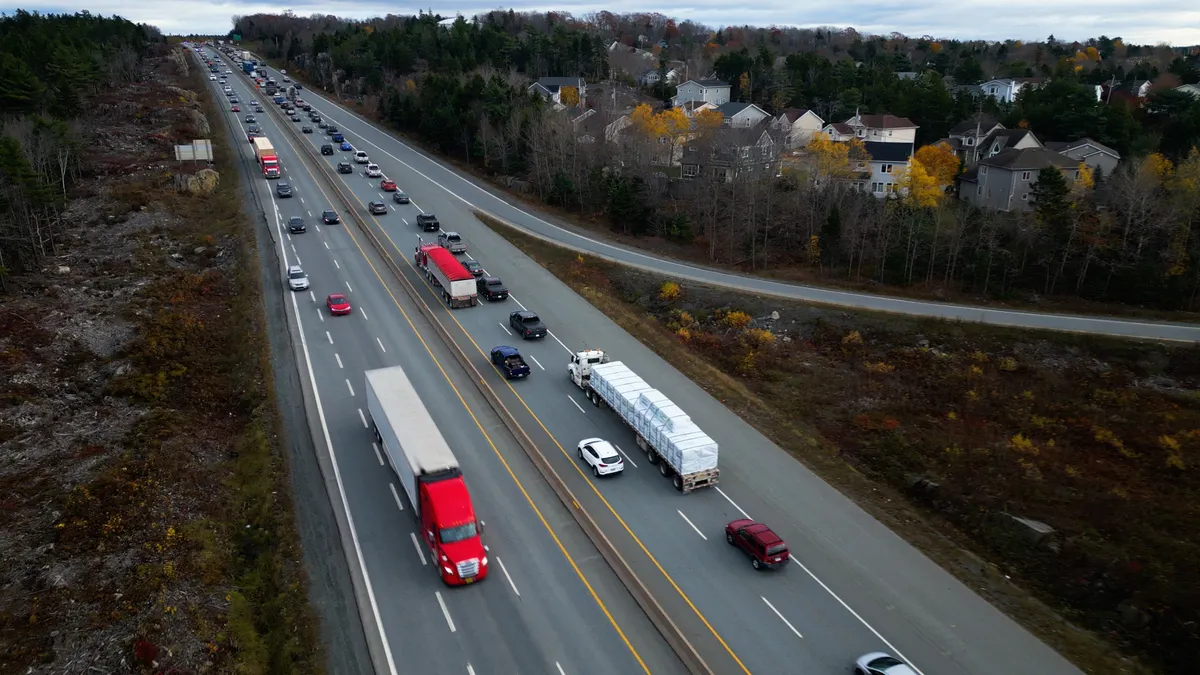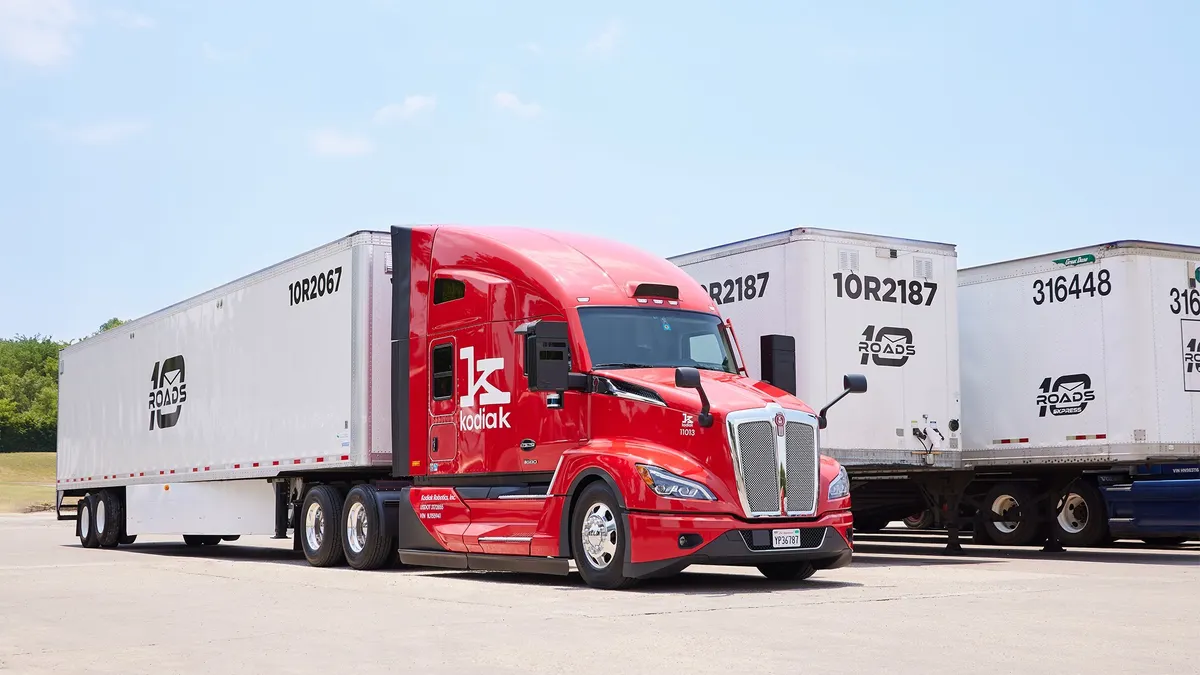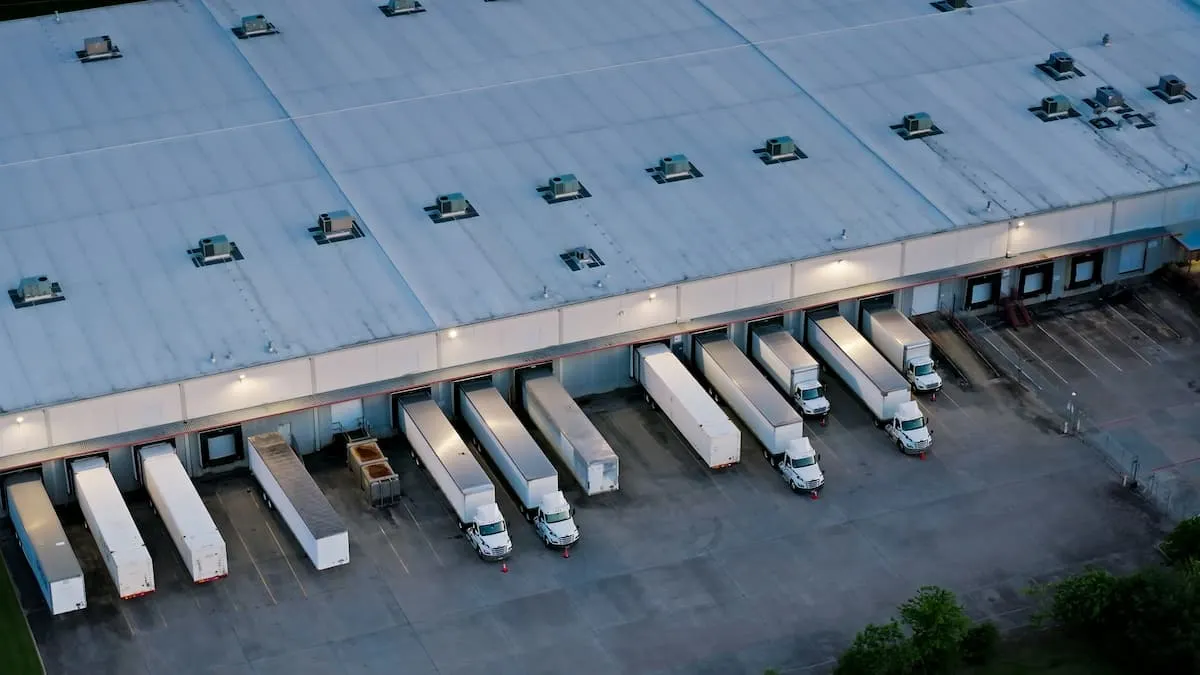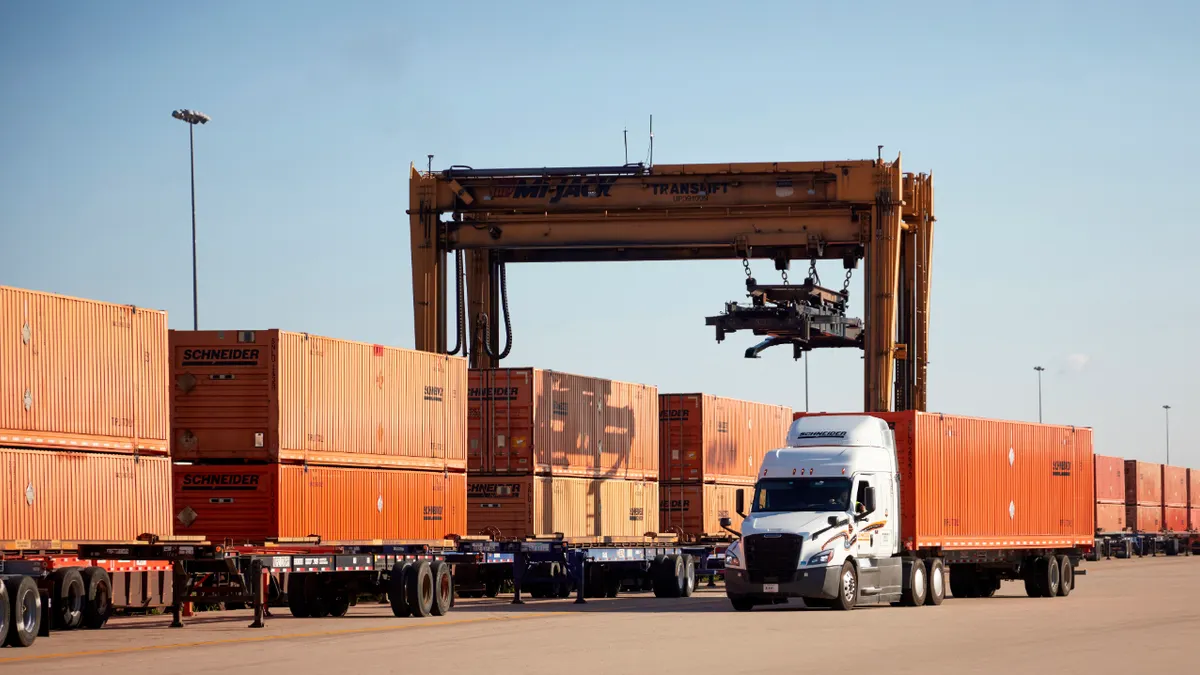You could say the owner-operator segment of the trucking industry was a part of the gig economy before it was cool. For years, brokers have connected independent truckers with loads using phones and faxes, and it could take hours or days and lots of phone calls to make a deal.
Today, some 15,000 brokers operate as intermediaries in the industry, and tech startups are seeking to disrupt the brokerage business model they see as fragmented and inefficient.
Whether they're called digital freight matching, on-demand trucking or the Uberization of freight, companies like Convoy and Freightlancer are challenging some of the largest brokerages in the industry, a segment lead by C.H. Robinson, the nation’s largest freight broker by revenue.
Building on the fact that most drivers carry smartphones, these startups have developed apps to overlay technology on top of the traditional way of doing business. Some charge a membership fee; others take a percentage of the freight bill as a broker would. Many of these startups point to inefficiencies of traditional brokerage models as one of the culprits for shortages in trucking capacity.
Digital freight brokers' pool of capacity
While the hype about the Uberization of freight is heavy, there's a crucial difference in the freight world versus passenger service.
"We haven't created any capacity with the advent of an app," said Kevin Abbott, vice president of truckload services in North America for C.H. Robinson, the largest freight broker. "The trucking industry is not leveraging the gig economy in the way that an Uber did in the cab space, where now your neighbor is driving people around in their Lincoln. That won't happen in trucking because it's all the same pool of capacity."
The split between contract and spot markets has been balanced roughly around 50/50, Freightwaves reported. For shippers and carriers, developing a plan and committing resources to support it makes for a more predictable supply chain rather than seeking capacity in the spot market.
"We haven't created any capacity with the advent of an app ... it's all the same pool of capacity."

Kevin Abbott
VP of Truckload Services in North America, C.H. Robinson
"For carriers, leveraging services for which they've committed trucks to a customer on an annual basis requires something more than just leaving your plan to the fact that maybe someone will contract my truck via phone on the day that I need to load," Abbott said.
So far freight on-demand hasn't had an impact on rates, as the driver shortage and lane demands are still the most significant factors. Capacity in the spot market has grown since last year, as economists point to an impending contraction in the trucking industry.
Disruption starts with a clean sheet
Seattle-based digital freight broker Convoy doesn't want to use technology to be a slightly better broker. Instead, Convoy sees its mission as removing the waste from the transportation process, which effectively adds capacity and could alleviate some of the long-standing problems of the industry such as the driver shortage.
"Our view is that there isn't really a shortage of drivers; there's just a shortage of innovation, which leads to all this waste," Ziad Ismail, chief product officer, said in an interview with Supply Chain Dive. "If you're just trying to be a slightly better broker and use technology to automate some of the things that brokers do, you're never going to solve the underlying issues for the industry."
The company started with a clean sheet approach to see how to build a better system rather than incrementally improve legacy systems.
Convoy developed a universal trailer pool that separates the trailer from the power unit. Convoy provides the trailer, and the carriers use the app to access the available drop shipments and commit to moving the load. The driver can show up when the load is ready, cutting wait times at the dock. At the destination, the driver drops the trailer for unloading.
"We spent time with shippers, and we saw that something was fundamentally broken about how the market is organized. We couldn't solve it by just brokering more efficiently. We had to rethink the structure," Ismail said.
Room for different business models
Sydney-based Freelancer.com, an online job-matching marketplace with more than 30 million members worldwide, in November 2018 acquired Channel 40, an Australia-based freight marketplace, to enter the global commercial freight market. Freightlancer will use the global payments platform from Freelancer combined with its expertise in onboarding and managing truck drivers.
Named after the most commonly used radio channel for Australian truck drivers, Channel 40 started out moving mining and other oversized equipment. Freightlancer plans to build a presence in the U.S. and other countries, CEO Josh Mullens told Supply Chain Dive.
Freightlancer sees itself as a marketplace and a management platform rather than a broker. The company has connections with 8,000 trucking operators, with plans to expand its presence in the U.S. and work with 3PLs and freight forwarders.
Using the platform, carriers and loads can be matched in as little as five minutes, replacing multiple phone calls and faxes to get quotes.
"It's a tool for carriers be able to get extra work, to increase their business by streamlining things, and it's a system that allows shippers to manage their time and services better and use our platform to log in all their freight movements," Mullens said.
"We spent time with shippers, and we saw that something was fundamentally broken about how the market is organized."

Ziad Ismail
Chief Product Officer, Convoy
In Australia, mining companies that used the platform to move heavy equipment saved $500,000 in a year while using many of the same carriers, Mullens said.
One aspect of the gig economy that Freightlancer plans to adapt to the trucking industry is instant payment. Clients put money in an escrow account, and the carrier is paid immediately upon delivery. Fast payments improve carriers' cash flow.
Freightlancer is also looking at expanding into parcel deliveries, tapping into the gig economy for people willing to deliver packages with their personal vehicles. These peer-to-peer delivery services will still have to be vetted with driver's license and vehicle insurance information, Mullen said.
Balancing scale, people and technology
One of the biggest challenges to manage freight on demand is managing scale. For an owner-operator, the owner can make decisions about which loads to contract. For a trucking company with a few trucks, the owner and driver will have to confer on the best options.
"The guy who clicks the button to post the truck isn't necessarily the guy who can say they will take the load," Abbott said. "It makes the most sense when the person with the phone in their hand is the person who makes the decisions."
For the brokers, scale is a crucial factor. A large broker like C.H. Robinson has relationships with more than 74,000 carriers. As a network grows, its connections multiply at an exponential rate, making it very difficult for smaller companies to be competitive.
"The more freight you have and the more relationships you have, scale improves your ability to optimize and to compete," Abbott said.
Of course, the large traditional brokers are not standing by to let the tech startups take over the business. C.H. Robinson has invested heavily in technology over the years to help shippers manage their supply chains and improve efficiency for truckers, offering services like order entry and fulfillment, shipment consolidation and other services beyond a transactional brokerage. GlobalTranz, a top-10 broker, recently launched a digital freight matching platform, the result of years of technology build up.
"Most of the tech-enabled companies are really brokers that have led with an app versus traditional brokers that have led with people," Abbott said. "To continue to grow, the tech companies will have to focus on people and as we try to increase our productivity and efficiency internally, we're going to leverage more technology."




















